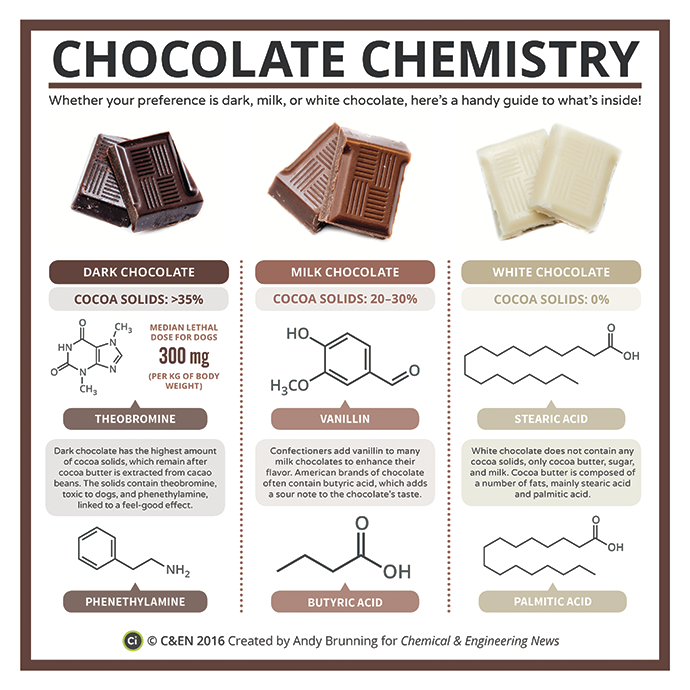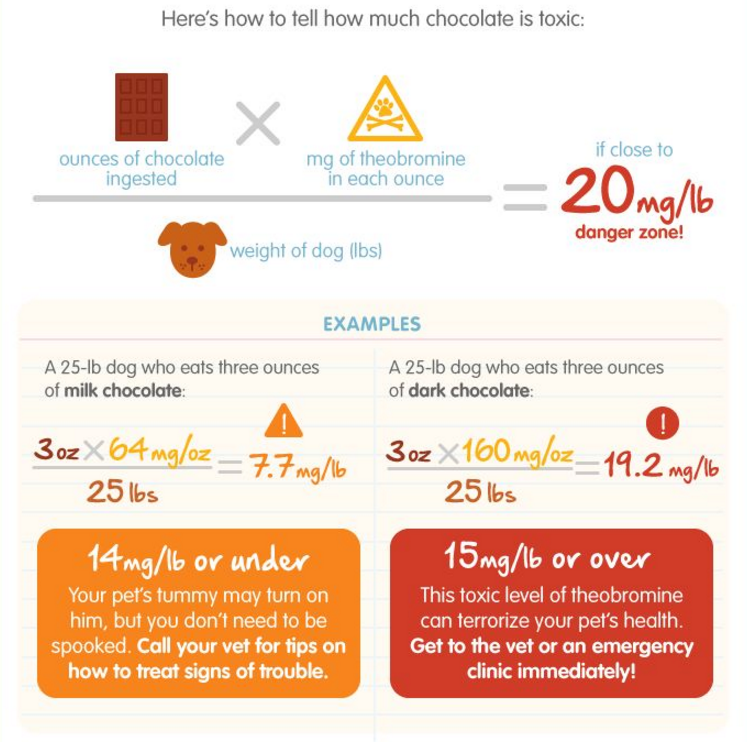If you own or plan to own a dog, you may have heard the horror stories about dogs accidentally eating chocolate. How can something so delicious be so harmful to dogs?

One can only imagine that dogs crave chocolate as much as we do. Photo Credits: Dr. Mark
The toxic component of chocolate is cocoa powder, processed from cocoa beans. Cocoa powder contains theobromine, a compound which stimulates the nervous system and increases feelings of arousal. Whereas theobromine has no adverse side effects to humans, it can cause discomfort to dogs; over-consumption of chocolate can lead to vomiting, diarrhea, seizures, and sudden death.

Breaking down the components of chocolate.
Photo Credits: Andy Brunning
Chocolate is known for its euphoric and addictive qualities, even becoming comparable to that of a drug. Although most people recognize chocolate as a harmless sweet, ‘the dose makes the poison‘ is crucial to evaluate when chocolate consumption becomes toxic. Canine digestive systems can only process theobromine in small amounts.
There are two main factors influencing the toxicity of chocolate to dogs: chocolate type and dog size.
Baking chocolate and chocolate chips contain the highest milligrams of theobromine per kilogram of chocolate than other chocolate types. The whiter the chocolate, the less theobromine is present, so white chocolate causes the least amount of internal damage per ounce.

Average theobromine levels in different types of chocolates. Photo Credits: PetPlan
In terms of dog sizes, larger dogs can consume more chocolate compared to small dogs because they weigh more. For example, a 75 lb golden retriever will reach the theobromine limit at after 15 ounces of milk chocolate (roughly 10 Hershey bars), whereas a 5lb pomeranian will reach the theobromine limit at 2.5 ounces of milk chocolate (roughly 1.5 Hershey bars).

There is an algorithm to determine the amount of theobromine a dog can safely consume. Photo Credits: PetPlan
Unfortunately white chocolate is not completely safe for dogs. Although it contains the lowest level of theobromine, white chocolate contains high fat and sugar levels since it uses cocoa butter instead of cocoa powder. Dogs do not process sugar or fat easily, and overconsumption of white chocolate could result in enteritis or pancreatitis!

As long as this dog does not consume the entire box, he or she will be alright. Photo Credits: dogsaholic.com
The most important fact is that chocolate consumption, like all food in life, is dose-dependent. There is no need to panic if your dog breaks into the snack cupboard and gobbles down a small chocolate bar.
Jessica Shi
